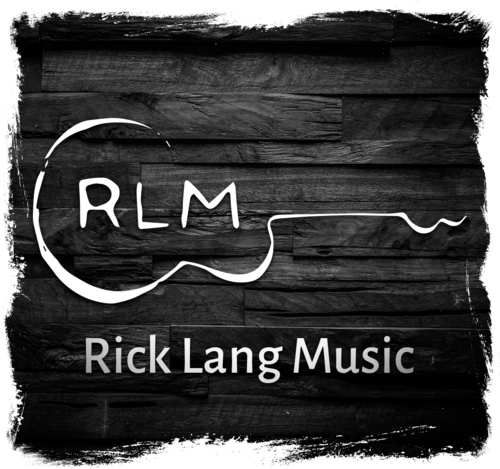Songwriting doesn’t have to be overwhelming. Here’s a quick guide to get you started on writing your first song, even if you’re a beginner. Follow these steps to turn your ideas into music:
- Pick a clear topic: Focus on one emotion, story, or moment. Use personal experiences or universal themes for inspiration.
- Learn basic song parts: Understand verses, choruses, and bridges to structure your song effectively.
- Create a melody: Start humming or improvising over simple chord progressions like C–G–Am–F.
- Write meaningful lyrics: Use vivid imagery and conversational language to connect with listeners.
- Refine rhymes: Use natural rhymes (perfect, slant, or internal) that fit your melody.
- Write what you know: Draw from personal experiences and add relatable details.
- Understand music basics: Learn melody, harmony, rhythm, and tempo to support your songwriting.
- Record a demo: Use your phone or free apps like GarageBand to capture your song and edit it.
- Keep equipment simple: Start with a basic instrument and recording device – no need for expensive gear.
- Practice consistently: Write regularly and experiment to improve your skills over time.
Quick Tip: Start with your chorus – it’s the heart of your song and can guide the rest of your writing. Don’t overthink it; just focus on expressing your ideas naturally. Keep writing, and you’ll find your rhythm!
The Simple Songwriting Formula that Changed Everything
1. Pick Your Main Topic
Start with one clear idea, emotion, or story to build your song around. Zero in on a specific memory or detail that stirs strong emotions. This approach helps you create vivid imagery and connect with your audience on a deeper level.
Here are a few ways to find a topic that feels natural and focused:
- Personal Experience: Draw inspiration from a recent event that stirred your emotions – like falling in love, facing a tough challenge, or dealing with loss.
- Observation: Write about something you’ve seen or heard that left a lasting impression.
- Universal Themes: Take a shared experience and add your own unique twist or perspective.
Key Factors to Keep in Mind
| Factor | Why It Matters |
|---|---|
| Emotional Connection | Helps your lyrics feel real and relatable. |
| Specificity | Brings your story to life with clear details. |
| Relatability | Makes it easier for listeners to connect. |
You don’t need to overcomplicate your first song. Focus on letting the melody and lyrics flow naturally.
Pro Tip: Use a notes app on your phone to capture ideas throughout the day. Whether it’s a strong emotion, a memorable conversation, or a striking image, these moments can inspire your song.
What to Avoid
- Picking topics that feel forced or disconnected from your emotions.
- Choosing ideas that are too abstract to visualize.
- Writing about broad concepts without narrowing them down.
For instance, instead of writing about "love" in general, focus on a single, powerful moment that defines it.
2. Learn Basic Song Parts
Getting familiar with the main parts of a song will help you build a natural flow. Each section has its own role to play.
Here’s a quick breakdown of the main components:
| Song Part | Purpose | Key Characteristics |
|---|---|---|
| Verse | Tells the story | New lyrics each time, same melody |
| Chorus | Highlights the main idea | Repeated lyrics and melody, often includes the title |
| Bridge | Offers a fresh angle | Unique melody and lyrics compared to verse/chorus |
These parts can be combined into a simple structure like Verse/Chorus/Verse/Chorus/Bridge/Chorus. This setup blends repetition with variety, keeping listeners engaged. Your chorus should stand out – it’s the emotional centerpiece and often includes the song’s title.
Making Verses Count
Each verse should move the story forward while sticking to the same melody. For instance, if your song is about a relationship, the first verse might describe how you met, and the second could share how the relationship grew.
Building a Memorable Chorus
Your chorus needs to be short, catchy, and easy to remember. Consider using a higher vocal range or a different intensity to make it stand apart from the verses. This section should deliver the heart of your song’s message.
Adding Depth with the Bridge
The bridge typically comes after the second chorus and offers a fresh perspective. It should sound noticeably different, both in melody and lyrics, while still connecting to the overall theme.
Pro Tip
Start with your chorus. Since it’s the centerpiece, nailing it early can guide the rest of your songwriting.
To make each section distinct, try these ideas:
- Switch up the rhythm between verses and chorus
- Use different chord progressions for each part
- Adjust the energy or delivery style
Smooth transitions are key to keeping your song cohesive. By mastering these basics, you’ll have a clear roadmap to turn your ideas into a complete song.
3. Build Your Melody
Start crafting your melody by humming random phrases and recording them on your phone. This can help you capture raw ideas to develop later.
Finding Your Hook
The chorus often holds the most unforgettable part of a song, so spend extra time on it. Here are a few key elements to focus on:
| Melody Building Block | Purpose |
|---|---|
| Repetition | Makes the tune stick in listeners’ minds |
| Movement | Keeps the melody engaging |
| Contrast | Highlights the most important parts |
Once you’ve nailed down your hook, use chords to give your melody a strong backbone.
Using Chord Progressions as a Foundation
Chords provide the structure your melody needs. Start with a simple progression like C–G–Am–F and experiment by layering different melodic ideas on top. This trial-and-error process can help you discover what works best.
Practical Melody-Writing Tips
- Stay within your natural vocal range to keep things comfortable.
- Keep it simple at first – use small, stepwise movements between notes rather than big jumps.
Free Improvisation
Try recording a 10-minute improvisation session over your chord progression. This freeform approach can spark fresh ideas without any pressure to get it perfect.
Refining Your Melody
Once you have a rough melody, record it and listen with a critical ear. Simplify where needed by cutting out extra notes, and introduce slight variations to repeated phrases to keep things interesting.
Many artists, like Post Malone, begin with vocal improvisation as a starting point before diving into lyrics.
With your melody in place, you’re ready to start shaping your lyrics.
4. Develop Your Words
Once you’ve nailed down your melody, it’s time to focus on creating lyrics that connect with your audience.
Finding Your Core Message
Figure out the main idea of your song. Every section of your lyrics should tie back to this central theme:
| Section | Purpose | Example Focus |
|---|---|---|
| Verse | Share the story | Specific details, vivid imagery |
| Chorus | Highlight the emotion | Main idea, feelings |
| Bridge | Shift the perspective | Fresh angle or turning point |
Once you’ve locked in your message, it’s easier to explore creative ways to bring it to life.
Writing Techniques That Work
Try freewriting to spark ideas. Set a timer for 10 minutes and jot down everything that comes to mind about your theme. Don’t worry about editing – just let the ideas flow.
Keep your language simple and conversational. Lyrics that are too abstract or overly complicated can lose your listeners.
Crafting Your Sections
Make your verses short and impactful – they should set the stage for a powerful chorus. When writing your chorus, focus on:
- Alliteration to create catchy sounds
- Straightforward language that’s easy to sing
- Repetition of key lines to make it stick
Fitting Words to Melody
Align your lyrics with the rhythm of your melody. Pay attention to syllable counts and phrasing to ensure they flow naturally. Take a cue from Post Malone’s "top lining" approach: sing phrases over your melody until the words feel right.
Blend your polished lyrics with your melody to make your song hit even harder.
5. Make Words Rhyme Well
Crafting rhymes that stick in your listener’s mind is key to writing memorable lyrics. But here’s the catch – they should feel effortless, not forced. Once your melody and lyrics are in place, refining your rhymes can make your song flow more smoothly and leave a lasting impression.
Types of Rhymes to Use
There are several rhyming styles that can add depth and variety to your lyrics:
| Rhyme Type | Description | Example |
|---|---|---|
| Perfect Rhyme | Words with identical ending sounds | day/way |
| Slant Rhyme | Words with similar but not exact sounds | home/gone |
| Internal Rhyme | Rhymes within a single line | "I fly so high in the open sky" |
Keep It Natural
If a rhyme feels awkward or out of place, it’s better to tweak it. Sometimes, a slant rhyme or a more conversational word choice will fit better with your song’s tone and flow.
Balance Syllables for Rhythm
Pay attention to the syllable count in each line. Matching or balancing syllables helps maintain a steady rhythm and makes your rhymes feel seamless. For instance:
"The sun is bright today" (5 syllables)
"I’ll find my way to stay" (5 syllables)
This balance creates a natural rhythm that complements your melody.
Use Rhyming Tools, But Don’t Depend on Them
Rhyming dictionaries can spark ideas, but don’t let them dictate your lyrics. Focus on how your words fit the melody and message. Take a cue from Ed Sheeran: in "Shape of You", he uses repetitive rhymes to craft a hook that’s impossible to forget.
Rhyme Patterns to Start With
For beginners, simple rhyme schemes like ABAB or AABB are great starting points. They provide structure without stifling creativity. Once you’re comfortable, try mixing in more complex patterns or combining different rhyme types within a single verse to keep things fresh.
sbb-itb-1c6af30
6. Write What You Know
To make your song truly connect with listeners, build on your personal experiences and emotions. Drawing from your own life adds depth and relatability to your lyrics.
Start with Your Story
Your everyday life is full of inspiration. Whether it’s a tough breakup, a major win, or a small moment that left a mark, these experiences can fuel your songwriting. They’re the foundation for crafting lyrics that feel real and meaningful.
Turn Personal Moments into Universal Themes
Your experiences might be unique, but the emotions behind them are something everyone can relate to. Think about how your story fits into broader themes that resonate with people:
| Theme | Your Experience | Universal Connection |
|---|---|---|
| Love | First heartbreak | The shared pain of losing love |
| Growth | Starting fresh in a new city | The challenge of facing the unknown |
| Success | Reaching a personal milestone | The joy of overcoming obstacles |
The key is to take these universal ideas and weave in the details that make them yours.
Be Specific with Details
Details bring your lyrics to life. Paint a picture by describing the exact moment or feeling you’re writing about. For example, Ed Sheeran’s “Thinking Out Loud” is packed with personal details that make the song feel both intimate and relatable.
Keep a Songwriting Journal
Make it a habit to jot down your thoughts, emotions, and experiences. This journal becomes a treasure trove of inspiration when you need material for your songs.
Capture Everyday Moments
Here are some ideas for what to document:
- Raw emotions or conversations that stick with you
- Life-changing events or realizations
- Random observations that catch your attention
Blend Truth with Creativity
While staying true to your story, use tools like metaphors and imagery to give your lyrics a broader appeal. This balance helps your song feel personal yet accessible to anyone who listens.
7. Know Your Music Basics
Understanding the basics of music is key when you’re starting to write your first song. Grasping these core concepts can help make your music more polished and enjoyable.
Key Elements of Music
Every song is built on four main components:
| Element | Description | Role in Songwriting |
|---|---|---|
| Melody | A sequence of musical notes | Forms the catchy tune people remember |
| Harmony | Notes played together | Adds richness and emotional depth |
| Rhythm | Timing patterns in the music | Sets the groove and overall vibe |
| Tempo | Speed of the music | Controls the pace and energy level |
Structuring Your Song
Think back to the song parts discussed earlier (verses, choruses, bridges). A well-organized structure helps guide your listener through the story and keeps the song cohesive. Verses set the stage, choruses reinforce the main idea, and bridges add variety.
Using Chord Progressions
Start with simple chord progressions to support your melody. For instance, the I-IV-V progression (like C-F-G) is a classic choice that forms the backbone of many popular songs. This simplicity allows you to focus on creating engaging melodies without overcomplicating things.
Crafting Memorable Melodies
Experiment with top lining – singing freely over basic chords to find natural, flowing melodies. This technique can help you craft tunes that feel genuine and work seamlessly with your lyrics.
Tips to Practice
- Play simple chord progressions repeatedly
- Record yourself humming or singing ideas
- Analyze your favorite songs to see what works
- Try out different rhythms and tempos
These fundamentals will give you a strong starting point as you dive into songwriting.
8. Make a Demo and Edit
Recording a demo is a great way to step back and evaluate your song objectively. It helps highlight areas that could use some work. You don’t need fancy equipment – a smartphone with a voice recording app works just fine. For more advanced options, try apps like GarageBand (iOS) or BandLab (Android/iOS), which let you layer multiple tracks.
Once you’ve recorded, follow a structured process to refine your song step by step.
The Demo-Edit Cycle
Breaking the process into three clear phases can help you stay organized:
| Phase | Purpose | Key Actions |
|---|---|---|
| Initial Recording | Capture the basic idea of your song | Record lead vocals and simple accompaniment |
| Critical Listening | Spot areas that need work | Note issues with melody, timing, or clarity |
| Targeted Editing | Improve specific parts | Fix one issue at a time, like pitch or rhythm |
Focus Areas for Editing
When editing, pay attention to these key areas:
- Clear vocals: Make sure the lyrics are easy to understand.
- Pitch: Keep the notes consistent and in tune.
- Rhythm: Ensure the tempo stays steady throughout.
- Transitions: Smooth out shifts between song sections.
Take a Break for a Fresh Perspective
After recording your demo, step away from it for about 24 hours. This break allows you to return with fresh ears, making it easier to catch details you might have missed. As you listen again, jot down specific timestamps where adjustments are needed.
Seek Feedback
Share your demo with one or two trusted people who can offer honest, constructive feedback. Ask them specific questions, such as:
- Which parts of the melody stand out the most?
- Are there any lyrics that feel unclear?
- Does the song flow naturally from start to finish?
- How does the overall emotion of the song come across?
This feedback can provide valuable insights to guide your next round of edits.
9. Keep Equipment Simple
When you’re starting out with songwriting, there’s no need to splurge on fancy gear. Keeping your setup minimal helps you stay focused on what truly matters: your music.
Essential Starter Kit
| Equipment Type | Recommended Options | Why It Works |
|---|---|---|
| Instrument | Acoustic guitar or keyboard | Easy to use, portable, and sparks creativity. |
| Recording Device | Smartphone or tablet | Always handy for capturing ideas quickly. |
| Software | GarageBand (iOS) or BandLab (free) | Simple tools for basic recording and editing. |
This setup ensures you’re concentrating on crafting songs instead of wrestling with complex equipment.
Why Less Can Be More
Believe it or not, having fewer tools can actually make you more creative. Think of legends like Bob Dylan, who started with just an acoustic guitar. Stripping things down forces you to hone in on the essentials – melody, lyrics, and structure – without getting sidetracked by production details.
Time Management for Songwriting
Try this simple routine to make the most of your time:
- 25 minutes: Focus entirely on songwriting – no recording, just writing.
- 5-minute break: Step away and reset.
- 15 minutes: Record a quick demo of your song.
- Review: Listen back and jot down any ideas for improvement.
This method helps you stay productive without feeling overwhelmed.
When to Add New Tools
Once you’re confident with the basics, you can start thinking about upgrading. But don’t rush – only invest in new gear when you know exactly how it will improve your process. Start small, one piece at a time:
- A basic microphone for cleaner vocals.
- A simple audio interface for recording onto your computer.
- Beginner-friendly music production software.
10. Keep Writing Songs
The key to improving your songwriting? Keep at it. The more songs you write, the more you’ll refine your skills and develop your craft.
Build a Daily Writing Routine
Consistency is your best friend when it comes to songwriting. Set aside 30-45 minutes every day for focused writing. Pick a time that works for you – maybe early morning when your mind is clear, or late at night when the day’s emotions are still fresh.
| Time Block | Activity | Purpose |
|---|---|---|
| 15 minutes | Free writing | Brainstorm raw ideas and lyrics |
| 20 minutes | Work on melodies | Explore musical themes |
| 10 minutes | Review and refine | Polish what you’ve created |
This structured routine helps you stay productive and push through creative slumps.
Write More, Learn More
The more songs you write, the better you’ll get. Each attempt teaches you something new about your style and strengths. Over time, you’ll notice your voice becoming clearer and your ideas more polished.
But what happens when you hit a creative block? Don’t worry – it happens to everyone.
How to Break Through Creative Blocks
Feeling stuck? Shake things up. Try switching to a different project, changing your surroundings, or using a new method to approach your work.
Experiment with New Techniques
Sometimes, all it takes is a fresh approach to spark inspiration. Try these ideas:
- Write lyrics first, without worrying about the music.
- Hum melodies to discover new musical ideas.
- Record rough drafts and revisit them later.
- Mix and match pieces from different songs to create something new.
Track Your Growth
Keep a songwriting journal to log your progress. Note what worked, what didn’t, and how you’re evolving. It’s a great way to celebrate small wins and pinpoint areas to improve.
Every songwriter starts somewhere. Each song you write brings you closer to discovering your unique voice. Keep going – you’re on the right path.
Conclusion
Songwriting doesn’t have to feel overwhelming. By breaking it down into simple steps, you can create a process that works for you.
Start with a clear topic and a straightforward structure. Focus on writing lyrics that tell your story, paired with melodies that bring those words to life. Regular practice will help you find your unique voice while sticking to the basics of songwriting.
Set realistic goals – like finishing one song a month – and build from there as your confidence grows. Connect with local songwriting groups or online communities to get helpful feedback and improve your work. While technical skills are important, it’s the emotion and individuality in your songs that will truly resonate with listeners.
Don’t let the need for perfection stop you from starting. Your first song might not be perfect, but it’s an important step forward. Stick to simple ideas, practice consistently, and use feedback to refine your craft. Over time, you’ll see growth in your ability and style.
Keep writing, stay patient, and trust the process – you’ll discover your own creative rhythm.
FAQs
What is the easiest song structure?
For those just starting out, the Verse-Chorus-Verse-Chorus (V-C-V-C) structure is a great choice. It’s straightforward and allows you to focus on crafting a story in the verses while creating a catchy hook for the chorus.
This format is widely used because it keeps things simple and works well. Many well-known songs stick to this pattern, making it easy to distinguish the storytelling in the verses from the standout chorus.



